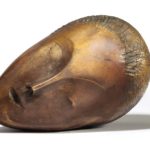
Winterthur, Switzerland – Last year’s exhibition “Darkside I –
Photographic Desire and Sexuality Photographed” explored the role of
photography in the imaging of sexuality and desire. Now, the
sequel, “Darkside II”, looks at the opposite end of the photographic
spectrum, charting the path from the body as a veritable ‘picture of
health’ to the body injured, disfigured or mutilated, in decline and
decay. This raises questions: Why is there an intimate
affinity between photography and death? Why does violence attract images?
The visual world of western culture is full of images of violence – both
random outbursts of violence and military violence, regulative state
violence. In a strange reversal, societies have shut away images of
life-affirming, life-giving sexuality, banishing them to the fringes of
obscurity, whereas images of dark and excessive violence have been brought
into the light. The reasons for this are many and complex: These
images have a consoling aspect, at the same time they are fascinating and
function as memorials, or as enlightening manifestos.







